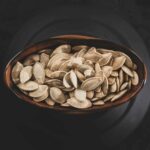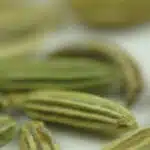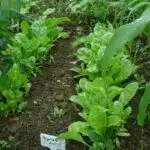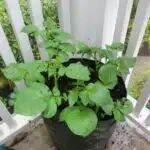Swiss chard is a leafy green vegetable that is becoming increasingly popular amongst health enthusiasts and foodies alike. This nutritious plant is packed full of vitamins and minerals, including vitamin K, vitamin A, vitamin C, magnesium and potassium. Not only is it healthy, but Swiss chard is also versatile in the kitchen – it can be eaten raw or cooked and used in a variety of dishes.
Growing your own Swiss chard is an easy and rewarding task that can provide you with fresh produce for months on end. However, many people are unsure of how to grow this vegetable successfully. In this article, we will explore the steps involved in growing Swiss chard from seed to harvest. Whether you have a large garden or just a small balcony, we will provide you with all the information you need to grow your own Swiss chard at home.
Selecting The Right Variety Of Swiss Chard
Hybrid or heirloom: which variety is best for you? Swiss chard comes in both hybrid and heirloom varieties. Hybrid varieties are a cross between different chard varieties, while heirloom varieties have been passed down through generations without any genetic alteration. When it comes to choosing between the two, it ultimately depends on personal preference. Hybrid varieties tend to have more uniformity and higher yields, while heirloom varieties often boast unique flavors and a wider range of colors.
Understanding the differences between hybrid and heirloom swiss chard is crucial when selecting the right variety for your garden. Hybrid swiss chard can offer a reliable crop with consistent growth habits, making them ideal for commercial production. On the other hand, heirloom swiss chard has become increasingly popular among home gardeners who value diversity in their produce. Heirlooms are also known to be more disease-resistant due to their genetic diversity.
If you’re interested in saving seeds from your favorite variety of swiss chard for future planting, it’s important to note that only open-pollinated or heirloom varieties will produce true-to-type offspring. Hybrid plants produce seeds that don’t come true and won’t be identical to their parent plant. To save seeds from an open-pollinated or heirloom plant, allow it to bolt and go to seed before harvesting the seed pods. Dry out the pods completely before cracking them open and collecting the seeds inside.
When selecting the right variety of Swiss Chard, understanding whether you prefer hybrid or heirloom types is crucial. Additionally, knowing how to save seeds from your favorite variety will help ensure a successful crop year after year. Once you’ve selected your preferred type of Swiss Chard and saved your seeds accordingly, the next step is choosing the optimal growing location.
Choosing The Optimal Growing Location
When choosing a location to grow Swiss chard, there are several microclimate considerations to keep in mind. First, it’s important to find an area with good air circulation. This can help prevent disease and pest issues that can be common among leafy greens. Additionally, Swiss chard prefers cooler temperatures and grows best in areas with moderate sun exposure. A balance between sun and shade is ideal for optimal growth.
It’s also important to consider the placement of your garden in relation to other structures or trees. Tall buildings or trees can create shady spots that may not be optimal for growing Swiss chard. Be sure to choose a location that receives enough sunlight throughout the day. However, if you live in an area with very hot summers, some partial shade during the hottest part of the day may be beneficial.
Ultimately, finding the perfect location for your Swiss chard garden will depend on your specific climate and environment. Keep in mind that too much sun or too little water can stress out your plants and affect their overall health and productivity. Take time to observe different areas of your yard or property before deciding on a final location for planting. With careful consideration and attention to detail, you’ll be well on your way to a successful Swiss chard harvest.
Moving forward into preparing the soil for planting, it’s important to keep in mind some key factors that can impact the success of your garden. By starting with healthy soil, you’ll set yourself up for a bountiful harvest later on. In the next section, we’ll discuss how to properly prepare your soil for planting Swiss chard seeds or seedlings so that they have all the nutrients they need to thrive.
Preparing The Soil For Planting
To grow healthy and delicious Swiss chard, you need to start with good soil. The quality of your soil will determine how well your plants grow and how flavorful they will be. Think of your soil as the foundation for your garden; if it’s not strong, everything else will suffer.
Before you begin planting, it’s essential to amend your soil properly. Soil testing is the best way to determine what nutrients and minerals are lacking in your soil. Once you know what you need, you can add organic matter such as compost, manure or peat moss to improve the quality of your soil. The goal is to create a loose, fertile bed that drains well but retains moisture.
To achieve success with Swiss chard, there are three key things to keep in mind when preparing the soil. First, make sure the pH level is between 6.0 and 7.5 because Swiss chard prefers slightly acidic to neutral soils. Second, loosen up any compacted areas in your garden bed by digging or tilling them up thoroughly before adding amendments like compost or aged manure. Thirdly, ensure that the bed has adequate drainage.
Now that you have amended your soil correctly for growing Swiss chard let’s move on to planting seeds or seedlings in our next section. Remember that proper preparation is critical for growing healthy plants that produce a bountiful harvest!
Planting Seeds Or Seedlings
After preparing the soil, it’s time to start growing Swiss chard. There are two ways to start growing Swiss chard: starting indoors and transplanting outside or direct sowing. Starting indoors involves planting seeds in containers and then transplanting them outside once they have grown enough. This can be done four to six weeks before the last expected frost date in your area. Direct sowing, on the other hand, involves planting seeds directly into the ground.
When starting indoors, fill a container with potting mix and plant one seed per container at a depth of 1/2 inch. Place the containers in a sunny area and keep the soil moist until germination occurs. Once the seedlings are about 2 inches tall, they can be transplanted outside into well-drained soil that has been enriched with compost. If you choose to direct sow, wait until after the last expected frost date in your area and sow seeds 1/2 inch deep and 1 inch apart in rows that are spaced 18 inches apart.
After planting your Swiss chard, it’s important to thin out any excess seedlings so that each plant has enough space to grow properly. Thin seedlings when they are about an inch tall, leaving only one every 6-8 inches for larger varieties or every 4-6 inches for smaller varieties. Once your plants are established, make sure to water them regularly and fertilize as needed according to package instructions.
Transition: Now that you have successfully planted your Swiss chard either by starting indoors and transplanting outside or through direct sowing and thinning seedlings, it is important to ensure their healthy growth through proper watering and fertilization techniques.
Watering And Fertilizing Your Plants
To ensure your Swiss chard plants grow healthy and strong, it’s important to give them the right amount of water and nutrients. A watering schedule is crucial for this, as Swiss chard prefers consistently moist soil. This means you’ll need to water your plants regularly, especially during dry spells or in hot weather. Aim to keep the soil evenly moist but not waterlogged, as too much moisture can lead to root rot.
In addition to regular watering, Swiss chard benefits from DIY fertilizer made from compost or other organic matter. An easy way to create your own fertilizer is by starting a compost pile with kitchen scraps and yard waste. Once the materials have decomposed into rich soil amendment, spread a layer of compost around your plants and work it into the top inch of soil. This will provide your Swiss chard with essential nutrients like nitrogen, phosphorus, and potassium.
To summarize, here are three tips for watering and fertilizing Swiss chard:
- Create a watering schedule and stick to it; aim for consistently moist but not waterlogged soil
- Use DIY fertilizer made from compost or other organic matter for added nutrients
- Apply a layer of compost around your plants and work it into the top inch of soil
Next up: mulching to retain moisture and suppress weeds. By using mulch in conjunction with proper watering and fertilizing techniques, you can help ensure a bountiful harvest of delicious Swiss chard!
Mulching To Retain Moisture And Suppress Weeds
After providing your Swiss chard with enough water and the right amount of fertilizer, it’s time to move on to the next step in caring for this vegetable. Mulching is a great way to retain moisture and suppress weeds, which will help your Swiss chard grow strong and healthy. In this section, we’ll discuss the benefits of mulching and the different types of mulch materials you can use.
One of the main benefits of mulching is its ability to retain soil moisture. This is especially important for Swiss chard as it requires consistently moist soil for optimal growth. By adding a layer of mulch around your plants, you can prevent water from evaporating too quickly, allowing your plants to absorb more water over time. Additionally, mulch acts as an insulator during colder months by protecting the roots from frost damage.
There are several types of mulch materials that you can use in your garden. Organic options such as straw or leaves are popular choices as they decompose over time, adding nutrients back into the soil. Other options include plastic or landscape fabrics which are effective at suppressing weeds but may not provide any additional nutrients to the soil. When applying mulch, ensure that it’s not too thick around the base of each plant to prevent stem rot or other diseases from forming.
Now that we’ve discussed the importance and benefits of mulching for Swiss chard growth, let’s move on to managing pests and diseases that may affect your plants.
Managing Pests And Diseases
Swiss chard is generally a low-maintenance crop, but it can occasionally fall prey to pests and diseases that can harm its growth. Therefore, it is important to take measures to prevent infestations and control fungal infections. The best way to accomplish this is by keeping the plants healthy and monitoring them regularly for signs of trouble.
To prevent infestations, you should keep your swiss chard well-watered and fertilized. Additionally, you should remove weeds and dead plant material from around the base of the plants. This will discourage pests from taking up residence in your garden. If you do notice an infestation, don’t panic. Most pests can be controlled with natural remedies such as soap sprays or neem oil.
Swiss chard is also susceptible to fungal infections such as leaf spot or powdery mildew. To control these diseases, avoid overhead watering and make sure that the plants have adequate air circulation. You can also apply a copper-based fungicide if necessary. By following these simple steps, you can protect your swiss chard from pests and diseases while ensuring a bountiful harvest.
Moving on to harvesting your swiss chard, it’s important to remember that this crop is a cut-and-come-again vegetable which means that you can harvest the outer leaves without harming the plant’s growth. To learn more about how to harvest your swiss chard properly, read on in the next section.
Harvesting Your Swiss Chard
Once your swiss chard plants have reached maturity, it’s time to start harvesting the leaves. To do so, simply use a sharp pair of scissors or garden shears to cut off the outermost leaves at their base. It’s best to leave at least two or three inner leaves intact on the plant so that it can continue to grow and produce more leaves.
Now that you’ve harvested your swiss chard, there are a variety of ways you can use it in your cooking. Swiss chard is an incredibly versatile vegetable and can be eaten raw or cooked in a number of different dishes. Some popular recipes include sautéed swiss chard with garlic and lemon, swiss chard quiche, and hearty soups and stews that feature this leafy green as a main ingredient.
If you have more swiss chard than you know what to do with, don’t worry! There are several methods for preserving this vegetable so that you can enjoy it all year round. One option is to blanch the leaves by boiling them briefly in water before freezing them. Another method is to pickle the stems using vinegar and spices. Whatever method you choose, storing your harvested swiss chard properly will ensure that you can continue to enjoy its health benefits and delicious flavor long after harvest season has ended.
As you finish up harvesting your swiss chard, don’t forget about the importance of proper storage techniques. By taking care to store your vegetables correctly, you can extend their longevity and preserve their flavor for weeks or even months after harvest season has ended. In our next section, we’ll discuss some tips for storing swiss chard so that it stays fresh and tasty for as long as possible.
Storing Swiss Chard For Longevity
Refrigeration of Swiss Chard is an effective means of prolonging its longevity, as it can be kept for up to a week when stored in an airtight container or wrapped in plastic wrap and stored in the refrigerator.
Wrapping Swiss Chard in a damp paper towel and storing it in the refrigerator can also extend its shelf life up to a week.
Cleaning Swiss Chard before refrigeration is recommended, as dirt and sand can cause the leaves to become slimy, reducing their longevity.
After cleaning, Swiss Chard should be dried thoroughly with a paper towel before being stored in the refrigerator.
For longer storage, Swiss Chard can be blanched and frozen, ensuring the vegetable will remain edible for up to six months.
For best results, Swiss Chard should be stored in the coldest part of the refrigerator and checked regularly for signs of spoilage.
Refrigeration
A key aspect of storing Swiss chard for longevity is refrigeration. By keeping this leafy green in a cold environment, the benefits of refrigerating can extend its shelf life and maintain its nutritional value. The cool temperature helps to slow down the natural process of decay and wilting, ensuring that your Swiss chard stays fresh for longer.
For optimal results, it is recommended to keep Swiss chard in the refrigerator at a temperature between 32°F and 40°F. When stored properly, Swiss chard can last up to two weeks in the fridge. However, it is important to note that the length of refrigeration for Swiss chard may vary based on the freshness of the produce when purchased.
Refrigerating Swiss chard not only extends its lifespan but also preserves its nutrients. This powerhouse vegetable is loaded with vitamins A, C, K, and E as well as antioxidants and fiber. By keeping it chilled in your fridge, you can ensure that these beneficial nutrients are retained for maximum health benefits. So if you want to enjoy fresh and nutritious Swiss chard for an extended period of time, don’t forget to store it in your refrigerator!
Wrapping
One of the key elements in extending the longevity of Swiss chard is proper storage. Refrigeration is a must, but there are other techniques that can also help keep this leafy green fresh for longer. Creative wrapping techniques, for instance, can help prevent moisture loss and preserve its crispness. This subtopic will discuss the benefits of wrapping when storing Swiss chard.
Aside from refrigeration, wrapping Swiss chard in eco-friendly materials such as cloth or paper towels can help maintain its freshness. Wrapping helps to absorb excess moisture and prevents condensation buildup which could lead to decay. Additionally, it also provides an extra layer of protection from external factors such as light and air circulation which can cause wilting.
When it comes to creative wrapping techniques, there are many options to choose from. One popular method is to wrap Swiss chard in damp paper towels before placing them into a plastic bag with ventilation holes. This technique ensures that the leaves remain hydrated without being exposed to too much moisture which can lead to rotting. For those who prefer eco-friendly options, reusable beeswax wraps or cloth bags are excellent alternatives that reduce waste while keeping Swiss chard fresh for a longer period of time.
Cleaning
Cleaning Swiss chard before storing it is an essential step in extending its longevity. Not only does cleaning remove dirt and debris, but it also helps to prevent the growth of bacteria that can cause spoilage. The benefits of cleaning Swiss chard go beyond just preservation; it also ensures that the leafy green is safe for consumption.
Efficient cleaning techniques can help preserve the freshness of Swiss chard for a longer period. One efficient tip is to fill a sink with cold water and submerge the leaves, gently swishing them around to remove any dirt or debris. Afterward, transfer them to a colander and rinse thoroughly under running water. Ensure that all crevices are cleaned properly, as dirt may hide in these areas, leading to bacterial growth.
Cleaning Swiss chard not only extends its shelf life but also ensures that it is free from harmful bacteria. By following efficient cleaning techniques such as soaking and rinsing thoroughly, you can enjoy this nutritious leafy green for an extended period without compromising on its quality or safety.
Composting And Reusing Plant Material
Composting is an excellent way to enrich soil, reduce waste, and reuse plant material. It’s a simple process that can be done at home with minimal effort. Composting benefits include improving soil health, increasing nutrient availability for plants, reducing greenhouse gas emissions, and diverting waste from landfills.
There are different composting methods to choose from depending on your preference and available resources. Some of the most common methods include hot composting, cold composting, vermicomposting, and bokashi composting. Hot composting involves creating a pile of organic material that heats up due to microbial activity, while cold composting relies on natural decomposition over time. Vermicomposting uses worms to break down organic matter quickly, while bokashi composting uses a fermentation process to speed up decomposition.
Whatever method you choose, there are some general guidelines to follow when composting. First, make sure your pile has a good balance of carbon-rich materials like dried leaves or straw and nitrogen-rich materials like kitchen scraps or grass clippings. You should also turn your pile regularly to help aerate it and speed up decomposition. With proper maintenance, you’ll have rich compost that can be used as fertilizer for your garden or potted plants.
Now that we’ve covered the benefits and methods of composting, let’s move on to growing swiss chard in containers. This is an excellent option for those with limited space or who want fresh produce right outside their door. By following a few simple steps, you can enjoy delicious swiss chard throughout the growing season without having to leave your home!
Growing Swiss Chard In Containers
Choosing Containers: When selecting a container to grow Swiss Chard, it is important to consider the size, material, and drainage of the container.
Planting Swiss Chard: Swiss Chard should be planted in a well-drained soil in a container that is at least 12 inches deep and 6 inches in diameter for each plant.
Choosing Containers: Clay and plastic containers are both suitable for growing Swiss Chard, but clay containers can increase the soil temperature and will need more frequent watering.
Planting Swiss Chard: Swiss Chard should be planted in the early spring and can be started from both seeds and transplants.
Choosing Containers
When it comes to growing Swiss chard in containers, choosing the right container size is crucial. A smaller container may not provide enough space for the plant’s roots to grow, while a larger one can lead to overwatering and soil compaction. For optimal growth, it is recommended to use a container with a capacity of at least 5 gallons. This will ensure that the plant has enough space for root development and access to water and nutrients.
Another important factor in container gardening is selecting the right type of soil. Swiss chard thrives in well-draining soil that is rich in organic matter. A mixture of peat moss, vermiculite, and compost can provide ideal conditions for growth. It’s also important to choose a high-quality potting mix that contains all essential nutrients for healthy plant development.
For those with limited space or looking for creative ways to grow Swiss chard, vertical gardening or hanging baskets are great options. These methods offer unique opportunities for compact gardens and can be particularly useful in urban settings or apartments with limited outdoor space. Vertical gardening involves attaching containers to walls or fence posts, while hanging baskets allow plants to be suspended from balconies or ceilings. Both techniques require adequate support structures and appropriate watering systems, but they can yield impressive results when done correctly.
Planting Swiss Chard
Swiss chard is a popular leafy green vegetable that is easy to grow and maintain in containers. One of the essential steps in container gardening is seed starting, which involves preparing and planting seeds indoors before transplanting them outdoors. When it comes to Swiss chard, it’s recommended to start seeds indoors 4-6 weeks before the last frost date in your area. This will give the plant enough time to develop strong roots and produce healthy foliage.
Transplanting techniques are crucial when growing Swiss chard in containers. Once the seedlings have grown to about 3 inches tall, they can be transplanted into larger containers or directly into the garden bed. It’s important to handle the delicate seedlings gently and avoid damaging their roots during transplantation. Additionally, ensure that you space the plants at least 12 inches apart to provide adequate room for growth.
When planting Swiss chard in containers, it’s essential to provide optimal growing conditions for the plant’s success. This includes providing adequate sunlight, water, and nutrients throughout its growth cycle. Regular watering and fertilization are necessary for lush foliage production and healthy root development. With proper care and attention, container-grown Swiss chard can thrive in any setting, providing fresh greens for salads or cooking all season long.
Companion Planting For Swiss Chard
Swiss chard is a versatile and nutritious green that can be grown in a variety of settings, from gardens to containers. One way to enhance the growth and health of this leafy vegetable is through companion planting. Benefits of companion planting include repelling pests, improving soil quality, and increasing yield. By selecting compatible plants to grow alongside your Swiss chard, you can create a mutually beneficial environment for all your crops.
Examples of compatible plants for Swiss chard include beans, peas, and radishes. Beans and peas are nitrogen fixers that can improve the soil quality by adding nutrients while also providing shade for the Swiss chard. Radishes help deter pests such as aphids and flea beetles while also breaking up compacted soil with their roots. Other compatible plants include lettuce, spinach, and herbs like dill or cilantro.
In addition to enhancing the growth of your Swiss chard, companion planting can also make your garden more attractive by adding a variety of colors and textures. By selecting compatible plants that thrive in different seasons or light conditions, you can extend your growing season and create a vibrant garden all year round. With a little planning and attention to detail, companion planting can be a simple yet effective way to boost the health and productivity of your Swiss chard crop.
Extending Your Growing Season
Companion planting can be a great way to grow Swiss chard. Some plants, such as beans and peas, actually help to fix nitrogen in the soil which can benefit Swiss chard growth. Other plants, like radishes and spinach, help to deter pests that may damage Swiss chard leaves. By planting companion plants alongside Swiss chard, you can create a healthier growing environment that may lead to a more bountiful harvest.
If you’re interested in extending your growing season for Swiss chard, there are a few techniques you can try. One option is winter gardening, which involves using cold frames or hoop houses to protect your plants from harsh weather conditions. Another technique is using frost protection methods like row covers or straw mulch to keep the soil around your plants warm and insulated during colder months. With these methods, you may be able to enjoy fresh Swiss chard well into the fall or even winter months.
Saving seeds for future planting is an important consideration when growing Swiss chard. To save seeds from mature plants, simply allow some of the flowers on your plant to turn into seed pods towards the end of the growing season. Once the pods have dried out completely, remove them from the plant and break them open carefully to collect the seeds inside. Make sure to store your collected seeds in a cool and dry place until it’s time for planting again next season. By taking these steps, you’ll be able to ensure a steady supply of delicious Swiss chard year after year.
Saving Seeds For Future Planting
As a horticulturist, saving seeds is one of the most important techniques to ensure the continuity of your garden. There are numerous benefits of seed saving that make it an essential practice for any gardener. One of the main benefits is that you can save money by avoiding purchasing new seeds every season. Furthermore, you can preserve the genetic diversity of your plants and help protect them from extinction.
Before storing your seeds, it’s crucial to ensure that they are completely dry. Any remaining moisture can cause them to rot or grow mold during storage. Once dry, store your seeds in a cool and dark place with low humidity levels. Airtight containers such as glass jars or plastic bags work best for seed storage since they prevent air and moisture from getting inside.
Techniques for seed storage may vary depending on plant species, but the general principle remains the same. Stored correctly, Swiss chard seeds can last up to five years before losing their viability. With proper labeling and organization, you can keep track of which seeds are older and should be used first. By incorporating seed saving into your gardening routine, you not only save money but also contribute to preserving plant biodiversity.
As with any gardening practice, there may be issues that arise when saving seeds. Troubleshooting common issues during growing includes pests and diseases that may infect the plants and affect the quality of their seeds. In the subsequent section, we’ll discuss how to identify potential problems and provide solutions to overcome them effectively without compromising your Swiss chard harvest.
Troubleshooting Common Issues During Growing
After saving the seeds for future Swiss chard planting, it is important to be aware of common issues that may arise during the growing process. One of these issues is nutrient deficiencies, which can stunt growth and even kill the plant. Common nutrient deficiencies in Swiss chard include nitrogen, phosphorus, potassium, and magnesium. These deficiencies can be identified by yellowing leaves or stunted growth. Treatment involves adding fertilizer to the soil or using foliar sprays.
Another issue that may arise is pests and diseases. Common pests that affect Swiss chard include aphids, flea beetles, and slugs. These pests can be controlled with insecticidal soaps or neem oil. Diseases such as downy mildew and leaf spot can also affect Swiss chard. Treatment involves removing infected leaves or using fungicides.
To maintain optimal growing conditions for Swiss chard, it is important to keep the soil moist but not waterlogged. Mulching around the plants can help retain moisture in the soil while also suppressing weeds. Providing adequate sunlight is also crucial for healthy growth. Swiss chard requires at least six hours of sunlight per day. Finally, regular fertilization with a balanced fertilizer can help ensure that the plant has all of the necessary nutrients for healthy growth.
By being aware of common issues that may occur during Swiss chard growing and following tips for maintaining optimal growing conditions, gardeners can ensure a successful harvest of this delicious and nutritious vegetable crop without much trouble or frustration.
Conclusion
Swiss chard is a nutritious and versatile vegetable that can be easily grown in your home garden. Choosing the right variety, location, soil preparation, and watering techniques will ensure a successful harvest. Companion planting with herbs and other vegetables can also benefit the growth of Swiss chard. With proper care, you can extend the growing season and even save seeds for future plantings.
It is important to be aware of common issues that may arise during growing, such as pests or disease. However, with patience and perseverance, you can overcome these challenges and enjoy a bountiful harvest of fresh Swiss chard. As the saying goes, “you reap what you sow,” so take the time to carefully tend to your plants and watch them flourish into healthy greens that will nourish both your body and soul.
Image Credits
- “Pasta with Swiss Chard” by HarlanH (featured)





























